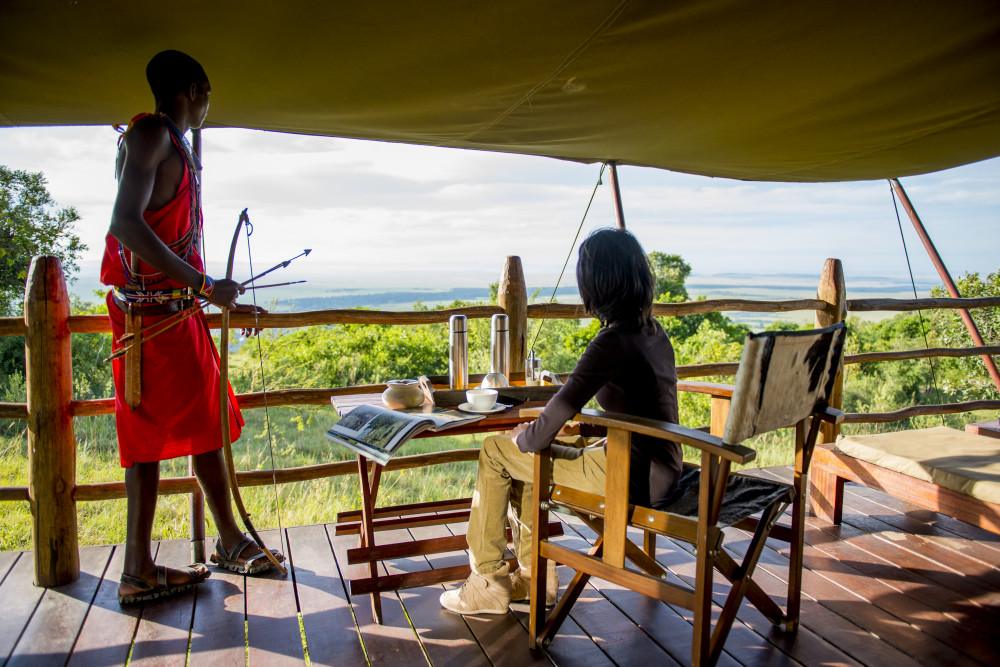Samburu National Reserve
Samburu National Reserve, located in the northern Rift Valley of Kenya, is a premier safari destination known for its unique wildlife and stunning landscapes. This reserve offers a distinctive and authentic safari experience, characterized by its arid climate, dramatic scenery, and the presence of rare animal species.
Wildlife
Samburu National Reserve is renowned for its rich wildlife, including the “Samburu Special Five” – a group of species endemic to the region. These include the Grevy’s zebra, Somali ostrich, reticulated giraffe, gerenuk, and Beisa oryx. Additionally, visitors can spot elephants, lions, leopards, cheetahs, and a variety of bird species, making it a vibrant and diverse safari destination.
Scenery
The reserve’s landscape is striking, with the Ewaso Ng’iro River flowing through it, providing a lifeline to the region’s wildlife. The scenery is dominated by rugged terrain, dry riverbeds, acacia woodlands, and the backdrop of the Koitogor and Ololokwe Mountains. The contrasting environments create a picturesque and dramatic setting for wildlife viewing and photography.
Weather and Climate
Samburu National Reserve experiences a hot and dry climate for most of the year, with temperatures often exceeding 30°C (86°F). There are two rainy seasons: the long rains from March to May and the short rains from October to December. The dry seasons, from June to September and January to February, offer the best conditions for game viewing, as animals congregate around water sources.
Best Time to Visit
The optimal time to visit Samburu is during the dry seasons, particularly from June to September and January to February. During these months, wildlife is more concentrated around the Ewaso Ng’iro River and other waterholes, making it easier to spot animals. Additionally, the weather is more predictable, and the roads are more accessible.
Size and Distance
Samburu National Reserve covers an area of approximately 65 square miles (165 square kilometers). It is located about 220 miles (350 kilometers) north of Nairobi, which translates to a travel time of roughly 5-6 hours by road or about an hour by flight from Nairobi.
Pros
1. The reserve is home to the rare and endemic “Samburu Special Five,” offering a unique opportunity to see species not found in other parts of Kenya.
2. The dramatic scenery, with its rugged terrain and the Ewaso Ng’iro River, provides a beautiful and varied backdrop for safaris and photography.
3. Visitors can engage with the local Samburu people, learning about their traditional lifestyles and rich cultural heritage, adding depth to the safari experience.
4. Compared to more popular parks like Masai Mara, Samburu tends to be less crowded, offering a more exclusive and tranquil safari experience.
5. The reserve is a birdwatcher’s paradise, with over 450 species of birds, including raptors, water birds, and dry-country specials.
Cons
1. The reserve’s hot and dry climate can be intense, especially during the peak of the dry season, which may be uncomfortable for some visitors.
2. Samburu’s remote location and the long travel distance from Nairobi can be a drawback for those looking for quick or easy access.
3. While there are several excellent accommodations, the options are fewer compared to more established safari destinations, which may limit choices for luxury travelers.
Popular Travel Accommodations
Luxury
1. Sasaab Lodge
2. Samburu Intrepids Luxury Tented Camp
3. Saruni Samburu
Midrange
1. Samburu Sopa Lodge
2. Ashnil Samburu Camp
3. Elephant Bedroom Camp
4. Samburu Game Lodge
5. Larsen’s Camp
These accommodations cater to a range of preferences and budgets, ensuring that visitors to Samburu National Reserve can enjoy a comfortable and memorable stay while exploring the unique wildlife and landscapes of this remarkable part of Kenya.
Game Drives

- Jan
- Feb
- Mar
- Apr
- May
- Jun
- Jul
- Aug
- Sep
- Oct
- Nov
- Dec

- Jan
- Feb
- Mar
- Apr
- May
- Jun
- Jul
- Aug
- Sep
- Oct
- Nov
- Dec

- Jan
- Feb
- Mar
- Apr
- May
- Jun
- Jul
- Aug
- Sep
- Oct
- Nov
- Dec



























